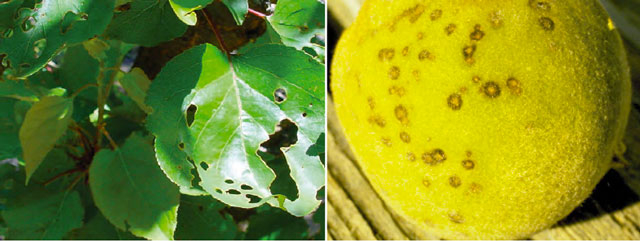Shot hole is caused by the fungus Stigmina carpophila and affects the leaves, fruit and buds.
Disease identification
Shot hole is initially identified by small brown spots with reddish rims on leaves.
These spots grow and the centre falls out leaving a round shot hole in the leaf. On the fruit, the spots can develop into deep indentations.
Damage
Shot hole decreases the efficiency of the tree by reducing its photosynthetic capacity.
If the infection is severe, the tree may experience premature leaf fall. Fruit can also be marked and disfigured, resulting in unmarketable fruit.
Monitoring
Wet conditions in late winter to early spring can activate shot hole spores that have remained dormant in bud scales and twig lesions during the previous season.
Infection requires at least 24 hours of continuous wetness and spores can germinate in temperatures as low as 1C.
Rain during budswell helps to spread the disease.
Management
Cultural and physical
Where practical, prune out infected wood and burn the prunings.
Hastening leaf fall will reduce the amount of inoculum that builds up during autumn.
Biological
There are no known biological control agents for shot hole.
Chemical
Chemical options for controlling shot hole are available.
Download the Orchard plant protection guide
See this article in Tree Fruit March 2022




















